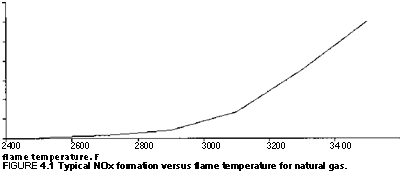Boiler and HRSG designs have undergone significant changes during the last few decades with the enforcement of emission regulations in various parts of the world. Decades ago boiler and HRSG users were concerned about two issues only: the initial cost of the boiler or HRSG and the cost of operation. Low boiler efficiency, for example, meant higher fuel cost, and a large pressure drop across boiler heating surfaces resulted in increased fan power consumption. Each additional 1 in. WC pressure drop in a boiler of 100,000 lb/h capacity results in about 5 kW of additional fan power consumption. In a gas turbine HRSG, an additional 4 in. WC of gas pressure drop decreases the gas turbine power output by about 1.0%. At 320°F stack gas temperature, the difference in efficiency between 5% and 15% excess air operation on natural gas is about 0.4%. Therefore, steam generators were operated at the lowest possible excess air, about 5% or so, to maintain good efficiency. With strict emission regulations in vogue throughout the world, present-day steam generators or HRSGs, in addition to having low operating costs, must limit the emissions of CO2, CO, NOx, SOx, and particulates. The expression ‘‘low NOx, no SOx, and no rocks’’ aptly describes the direction in which we are headed. However, several of the techniques used for emission control increase the cost of owning and operating
the boilers and HRSGs. For example, in order to meet the stringent levels of NOx and CO, today’s boilers have to operate at higher excess air and use some flue gas recirculation (FGR), which affects their efficiency as well as their operating costs significantly, as we discuss later.
Owing to the use of low-NOx burners, the furnace dimensions of standard boilers may have to be reviewed to avoid flame impingement concerns. The completely water-cooled furnace (Fig. 4.2) is another innovation that helps in lowering emissions. If the desired emission levels are in single digits, HRSGs and packaged boilers use catalysts to minimize NOx and CO, which influences their design significantly. For example, a gas bypass system has to be provided in boilers, and the evaporator may have to be split up in the case of HRSGs to accommodate the selective catalytic reduction (SCR) system.
Thus, there are several variables that affect emissions and numerous options to minimize them, as indicated in Fig. 4.3, which will be addressed in this
|
2400 2600 2800 3000 3200 34 00 Flame temperature. F Figure 4.1 Typical NOx formation versus flame temperature for natural gas. |
 140
140
C 120 |,00 ^ 80 « 60 І40 20 □
|
FIgure 4.2 Water-cooled furnace. (Courtesy of ABCO Industries, Abilene, TX.) |
Chapter. These emission control strategies naturally add to the initial and operating costs of boilers and HRSGs and impact their design as well, a price we must pay for cleaner air.



 4 августа, 2013
4 августа, 2013  doctype
doctype 
 Опубликовано в рубрике
Опубликовано в рубрике